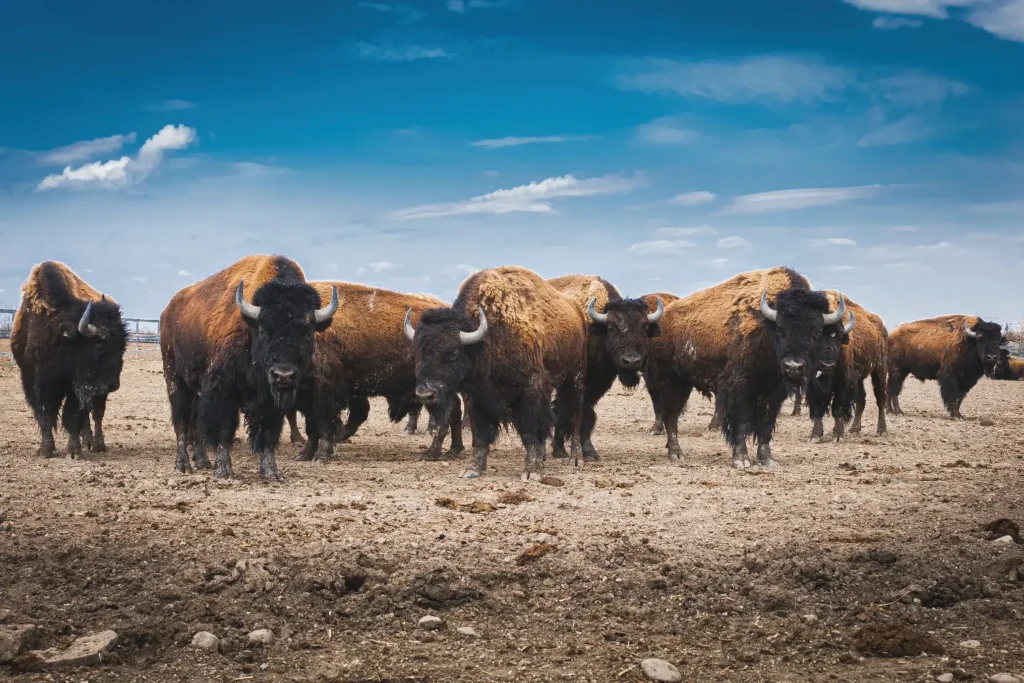
Malignant catarrhal fever is a severe, often fatal, lymphoproliferative disease of artiodactyls caused by herpesviruses of the genus Herpesviridae. It occurs worldwide and is sporadic, it can also occur as an epizootic, mainly in domestic cattle (Bos taurus), Bali cattle (Bos javanicus) and American bison, but can also occur in captive water buffalo and deer, including the white-tailed deer and Pere David's deer, has a close association with contact between sheep, especially lambing sheep, and cattle and wildebeest.
Symptoms
The virulent inflammatory disease syndrome associated with malignant catarrhal fever is characterized by widespread vascular and lymphoproliferative lesions in the lymphoid tissues of the body, the mucosal lining of the respiratory and gastrointestinal tracts, and the central nervous system.
During the incubation period there are usually mild to moderate clinical signs and rapid death of affected animals, the recurrent or persistently infectious nature of the virus means that clinical signs may reappear in an individual animal after a cessation of symptoms. After an incubation period, affected animals develop fever, depression, leukopenia, profuse nasal and ocular secretions, bilateral corneal opacity that may progress to blindness, severe keratoconjunctivitis, and anterior uveitis.
They also present with ulcerations on the tongue, gums, hard and soft palate and abomasal mucosa that may be hyperemic with areas of congestion and petechial hemorrhages, the lymph nodes are enlarged and edematous; The lungs and trachea become obstructed and the epithelium of the genital tract is sloughed off.
The gastrointestinal tract may be affected by malignant catarrhal fever with severe diarrhea and vomiting, but this is not always present, other signs include a non-productive cough and a pancreatic lesion which may be asymptomatic or present with abdominal pain; the liver is enlarged and pale and may be asymptomatic or there may be hepatic necrosis, the brain is often involved in malignant catarrhal fever and is associated with depression, tremors and lethargy.
Necropsies of animals with malignant catarrhal fever show severe and generalized tissue necrosis that includes multiple foci of interstitial inflammation in the kidneys, hemorrhage throughout the gastrointestinal tract, and erosions and ulcerations in the gastrointestinal tract, extremities, and oral mucosa, in the majority. In most cases, the brain is affected.
Learn more about other diseases that affect livestock by clicking here.

Diagnosis of Malignant Catarrhal Fever
Malignant catarrhal fever results from infection with one or more members of a closely related group of ruminant gammaherpesviruses. These viruses persist in nature as subclinical infections of their reservoir (natural) hosts and if transmitted to susceptible ungulates to which they are not adapted, they cause a characteristic pathological syndrome.
The virus can be detected in blood or tissue samples from suspected clinical cases, but the diagnosis is usually based on characteristic signs and findings in post-mortem examination, the presence of viral antibodies in serum can be confirmed by serological methods (viral neutralization, immunoperoxidase technique or indirect ELISA), but these techniques are hampered by cross-reactivity with other herpesviruses.
Detection of the virus in the mucosa of the gastrointestinal tract is most easily performed by virus-specific polymerase chain reaction (PCR) assays, which can be used to detect viral DNA in tissues and secretions of affected animals; the same diagnostic method used to detect bovine pox.
Several different strains of viruses are responsible for malignant catarrhal fever, the most common cause in domestic and feral sheep is the herpesvirus of the genus Macavirus, of which it has been isolated in cell cultures; The African form of the disease, associated with wildebeest, is caused by herpesviruses of the genus Alcelaphus, including herpesvirus 1 and herpesvirus 2; Other herpesviruses that cause malignant catarrhal fever are known to occur naturally in other ungulate species, but they have not yet been widely reported and their pathogenic potential awaits clarification.
Malignant catarrhal fever is a major problem for cattle, deer and bison ranchers and ranchers in North America and Europe, where the disease is spread by herders who herd their livestock near wildebeest migratory routes. It is also a serious problem in some parts of Africa, particularly where herders herd their livestock near wildebeest during the annual migration. The virus is transmitted through close contact with the animal and its faeces or excrement, and transmission of the disease among herders has resulted in conflicts between livestock and wildlife managers.
In the United Kingdom, ovine herpesvirus 2 is the agent that causes malignant catarrhal fever, being a major cause of ill health in the livestock industry, this virus is carried by sheep without causing illness and is transmitted to cattle through the direct contact of susceptible sheep, often newborn lambs. However, many months may elapse between contact with sheep and the development of clinical disease in cattle.

Treatment and prevention
Currently, like the Cryptosporidiosis in calves, there is no treatment or vaccine for malignant catarrhal fever in any species and almost all cases of the disease are fatal in affected animals. Prevention consists of avoiding contact between affected and unaffected animals, not co-grazing cattle with sheep, avoiding housing cattle with pregnant or recently lambed sheep, and avoiding direct contact between these two species, but this is not always practical in farms with mixed livestock.
Until recently, scientists did not know how the virus caused its symptoms, as herpesviruses cannot be grown in cell cultures, it has since been discovered that herpesviruses are capable of changing their target cells throughout the body, changing tissues to those they affect while they do it.
Ovine herpesvirus 2, which causes malignant catarrhal fever in sheep, is closely related to alcelafin herpesvirus 1, which causes malignant catarrhal fever in wildebeests in Africa. This herpesvirus can be transmitted to unsuspecting ungulates, such as bison, by inoculation with blood from clinically affected sheep or by aerosol with excreting nasal secretions from infected sheep. Ovine herpesvirus 2 is also known to infect antelopes such as kudu and oryx.
Outside Africa and in zoological collections, the sheep-associated form of malignant catarrhal fever (caused by ovine herpesvirus 2) is primarily associated with confined livestock. Sheep-associated malignant catarrhal fever occurs sporadically or as outbreaks of individual cows infected with herpesvirus 2. This form of malignant catarrhal fever is transmitted through direct contact between susceptible ruminate animals and subclinically infected and excreted sheep, although they can pass several months between such contact and the appearance of clinical disease.